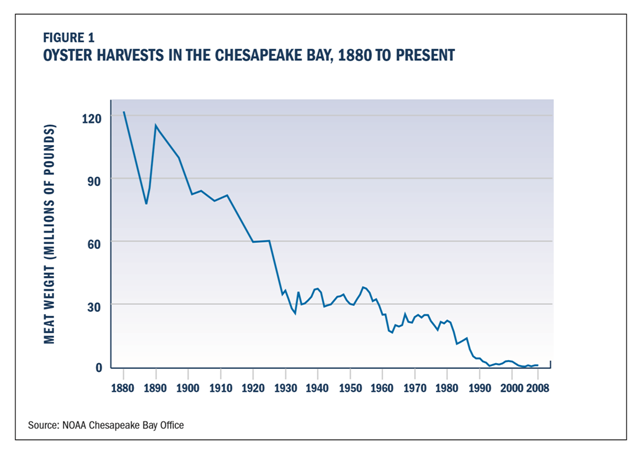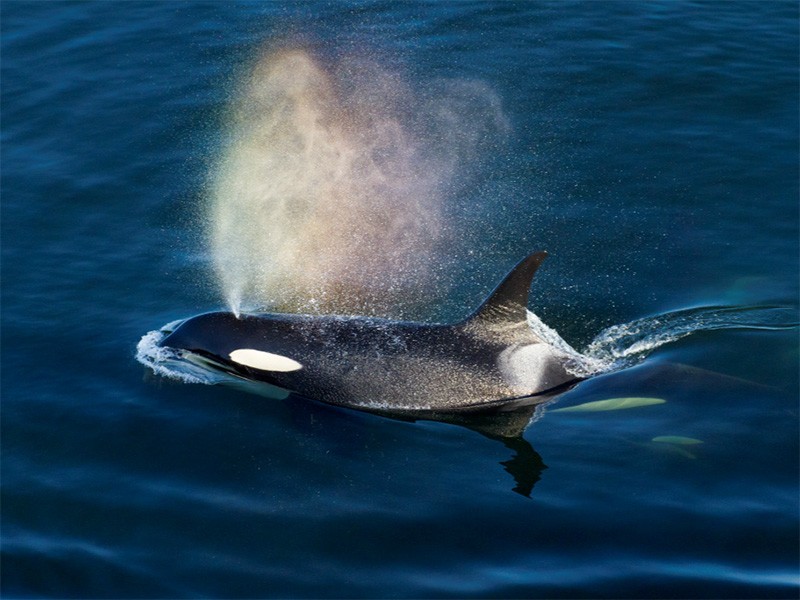Graph of the Day: Oyster harvests in the Chesapeake Bay, 1880-2008

July 2010 (Chesapeake Bay Foundation) – Oyster harvests tumbled by two-thirds between the 1890s and 1930, but then remained relatively stable at a lower level until the 1950s. Then a pair of diseases hit.
MSX and Dermo are both caused by parasites that attack and frequently kill oysters, although they are harmless to people. Compounded by continued overharvesting and pollution, these diseases devastated oyster populations in the Chesapeake.
The losses to disease were especially severe in the 1980s, and have tended to be worse in Virginia than in Maryland because both parasites thrive in the saltier waters of the Southern Bay. But Maryland has also suffered, with oyster reefs in this state’s portion of the Bay declining by about 80 percent in the last 25 years alone.
During this time period, oyster harvests have fallen by 90 percent and the number of oystermen has plummeted by 75 percent. Harvests across the Bay today have fallen to less than one percent of their historic highs in the late 19th century. In 2009, there are only about 1,000 people in Maryland and Virginia with oyster harvesting licenses—roughly two percent the number of oystermen in the late 19th century. And many of those who have oyster licenses today are no longer active.
On the Brink: Chesapeake’s Native Oysters – What it Will Take to Bring Them Back [pdf]


